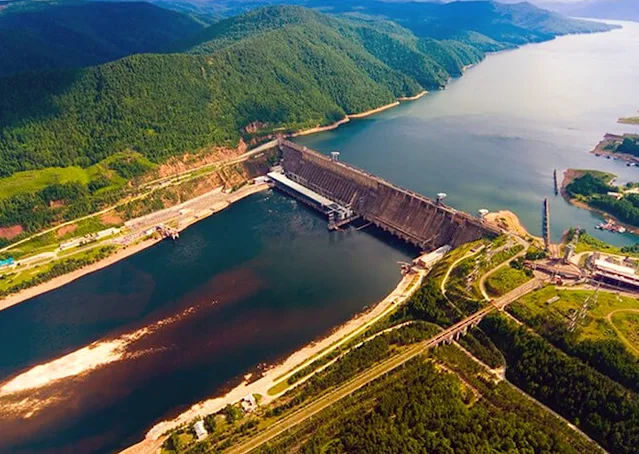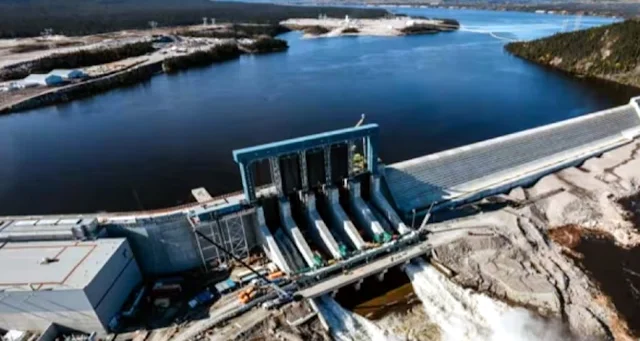Introduction
Hydroelectric power stations are an important source of renewable energy, providing significant amounts of electricity to many countries around the world.
The largest hydroelectric power stations, such as the Three Gorges Dam in China and the Itaipu Dam on the border of Brazil and Paraguay, have immense installed capacities, capable of generating tens of thousands of megawatts of electricity. As the world continues to seek out clean and renewable energy sources, hydroelectric power stations will likely continue to play a significant role in meeting our energy needs.
Largest hydroelectric power stations in the world, ranked by installed capacity
Table: Largest Hydroelectric Power Stations in the World
Note: This table lists some of the largest hydroelectric power stations in the world based on their installed capacity. The rankings may change over time as new projects are completed.
| Rank | Power Station | Country | Capacity (MW) |
|---|---|---|---|
| 1 | Three Gorges Dam | China | 22,500 |
| 2 | Itaipu Dam | Brazil/Paraguay | 14,000 |
| 3 | Xiluodu Dam | China | 13,860 |
| 4 | Grand Coulee Dam | United States | 6,809 |
| 5 | Guri Dam | Venezuela | 6,200 |
| 6 | Krasnoyarsk Dam | Russia | 6,000 |
| 7 | Tucuruí Dam | Brazil | 5,800 |
| 8 | Bratsk Dam | Russia | 5,630 |
| 9 | Sayano-Shushenskaya Dam | Russia | 6,400 |
| 10 | Belo Monte Dam | Brazil | 11,233 |
Here are some of the largest hydroelectric power stations in the world, ranked by installed capacity:
Three Gorges Dam, China
The idea of constructing a dam on the Yangtze River dates back to the early 20th century when Sun Yat-sen, the founder of modern China, proposed the construction of a hydroelectric dam on the river. However, the project was not pursued due to financial and technical constraints. In the 1950s, the Chinese government initiated studies on the feasibility of constructing a dam on the Yangtze River. However, the project was put on hold due to political and economic instability in the country.
With an installed capacity of 22,500 MW, the Three Gorges Dam is the largest hydroelectric power station in the world. It is located on the Yangtze River in China and was completed in 2012.
Aswan High Dam, Egypt
Egyptian Ministry of Water Resources and Irrigation - Installed Capacity: 2,100 MW - Type of turbine: Francis
The construction of the Aswan High Dam required the relocation of thousands of people, as well as the flooding of numerous archaeological sites and ancient temples, including Abu Simbel. However, a major benefit of the dam has been the creation of Lake Nasser, one of the largest man-made lakes in the world, which provides recreational opportunities for tourists and locals alike.

Xiluodu Dam, China
The Xiluodu Dam has an installed capacity of 13,860 MW and is located on the Jinsha River in China. It was completed in 2014.
The Xiluodu Dam is a gravity dam that stands at a height of 285 meters and has a length of 700 meters. The dam's reservoir has a capacity of 12.67 billion cubic meters, making it one of the largest reservoirs in the world. The power plant has a total installed capacity of 13,860 MW, which is generated by the 18 Francis turbines, each with a capacity of 770 MW.
Guri Dam, Venezuela
The idea of building a dam on the Caroni River dates back to the 1950s. In 1953, the Venezuelan government signed a contract with the American company Electric Bond and Share (EBASCO) to conduct a feasibility study on the construction of a hydroelectric power plant in the area. The study recommended the construction of a dam on the Caroni River to generate electricity.
The Guri Dam has an installed capacity of 10,235 MW and is located on the Caroni River in Venezuela. It was completed in 1986.

Grand Coulee Dam, United States
The idea of constructing a dam on the Columbia River dates back to the early 20th century. In 1928, the U.S. Army Corps of Engineers conducted a survey of the river and identified several potential sites for a dam. One of the sites was located at Grand Coulee, a natural channel through a basalt ridge that had been formed by the Columbia River over millions of years.
The Grand Coulee Dam has an installed capacity of 6,809 MW and is located on the Columbia River in the United States. It was completed in 1942.

Tucuruí Dam, Brazil
The Tucuruí Dam was constructed by the Brazilian government to meet the country's growing demand for electricity in the 1970s. The project was part of a larger effort to develop Brazil's infrastructure and spur economic growth. The government recognized the potential of the Tocantins River Basin as a source of hydropower, and the Tucuruí Dam was identified as the centerpiece of the Tucuruí Hydroelectric Complex.
The Tucuruí Dam has an installed capacity of 8,370 MW and is located on the Tocantins River in Brazil. It was completed in 1984.

Sayano-Shushenskaya Dam, Russia
The idea of building a hydroelectric power plant on the Yenisei River was first proposed in the early 20th century. However, it was not until the 1960s that the Soviet government decided to proceed with the construction of the dam. The construction of the Sayano-Shushenskaya Dam began in 1961, and it took 17 years to complete. During this time, more than 26,000 workers were involved in the construction of the dam.
The Sayano-Shushenskaya Dam has an installed capacity of 6,400 MW and is located on the Yenisei River in Russia. It was completed in 1978.

Longtan Dam, China
The idea of constructing a dam on the Hongshui River dates back to the 1950s when the Chinese government began planning the development of the Guangxi Zhuang Autonomous Region. However, the project was postponed several times due to lack of funds and political turmoil. It was not until 1986 that the Chinese government officially approved the construction of the Longtan Dam as part of the country's efforts to increase its energy production and meet its growing electricity demands.
The Longtan Dam has an installed capacity of 6,426 MW and is located on the Hongshui River in China. It was completed in 2009.

Krasnoyarsk Dam, Russia
The Krasnoyarsk Dam is a hydroelectric dam located on the Yenisei River in Russia. It is one of the largest hydroelectric power plants in the world, with a total installed capacity of 6,000 MW. The dam is located in the Krasnoyarsk Krai region of Siberia, about 30 kilometers (18.6 miles) upstream from the city of Krasnoyarsk.
The Krasnoyarsk Dam has an installed capacity of 6,000 MW and is located on the Yenisei River in Russia. It was completed in 1972.

Churchill Falls Dam, Canada
The Churchill Falls Dam, Hydroelectric Power Plant is a large-scale hydroelectric power generation facility located on the Churchill River in Labrador, Canada. The facility is owned by Churchill Falls (Labrador) Corporation Limited, a subsidiary of Nalcor Energy, a Crown corporation owned by the government of Newfoundland and Labrador.
The Churchill Falls Dam has an installed capacity of 5,428 MW and is located on the Churchill River in Canada. It was completed in 1971.
Conclusion
Hydroelectric power is one of the most reliable and cost-effective renewable energy sources available, and it has several advantages over other sources of energy.
For instance, hydroelectric power is not dependent on weather conditions like solar or wind power, which can be intermittent. Furthermore, hydroelectric power stations can be used for flood control, irrigation, and water supply in addition to generating electricity.
However, the construction and operation of hydroelectric power stations can have significant environmental impacts, such as the displacement of local communities, loss of habitat for wildlife, and changes to river ecosystems. Therefore, it is important to carefully consider the potential environmental impacts of these projects and to seek ways to minimize or mitigate their negative effects.
The largest hydroelectric power stations in the world are impressive feats of engineering and technology, providing clean and renewable energy to millions of people. As the world continues to prioritize sustainability and the transition to a low-carbon economy, it is likely that hydroelectric power will continue to play an important role in our energy mix.





